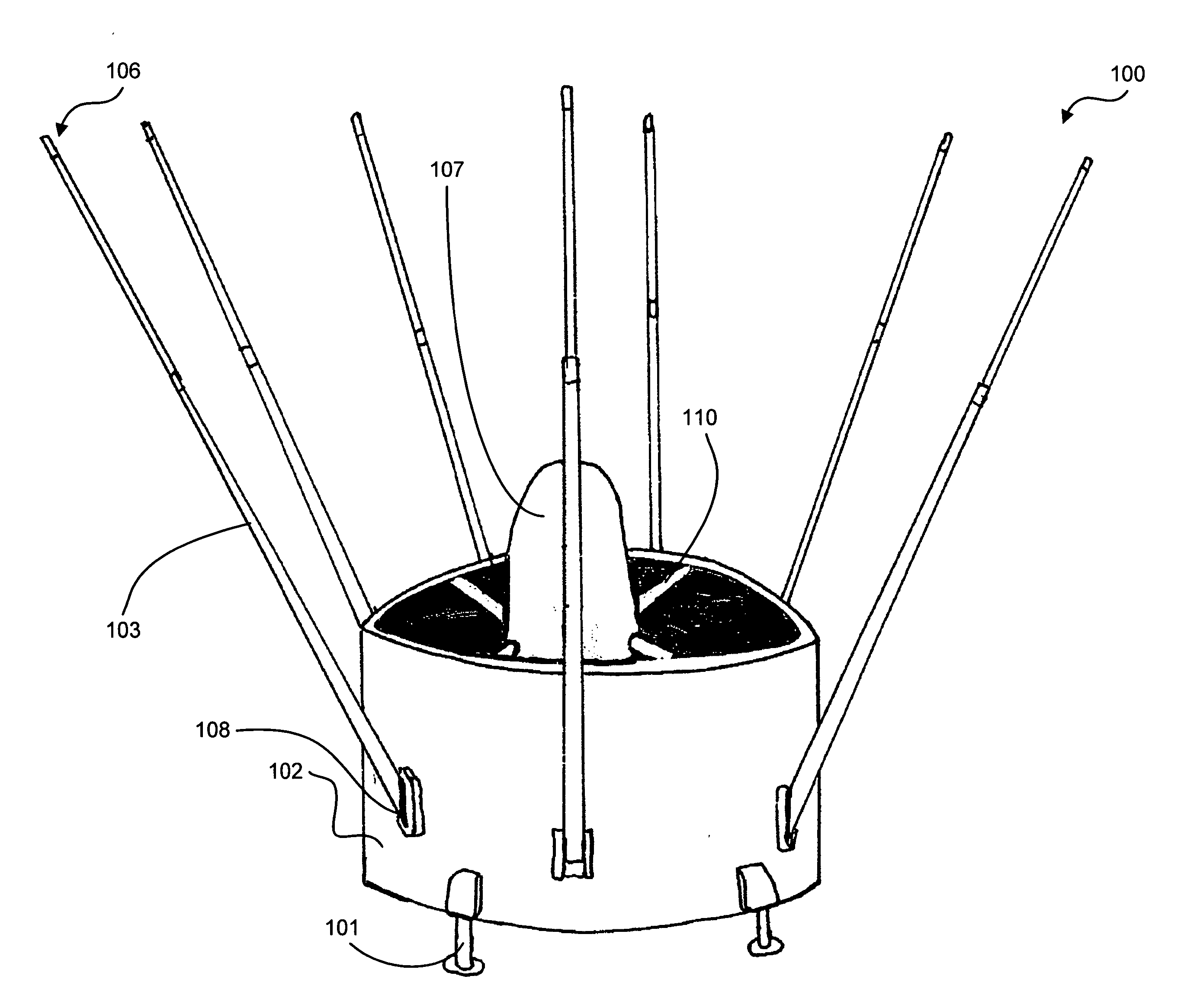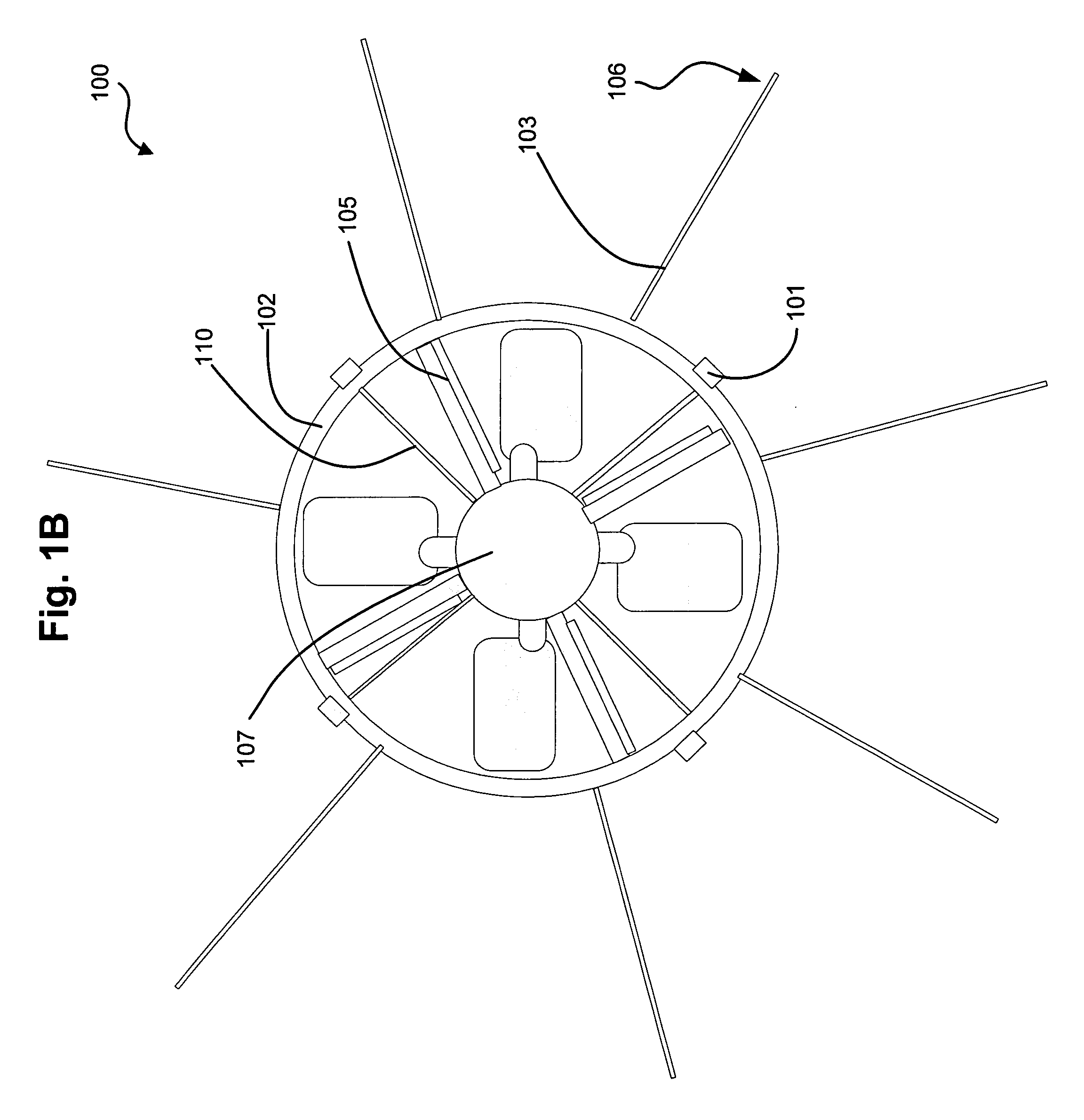Airborne acoustic sensor array
- Summary
- Abstract
- Description
- Claims
- Application Information
AI Technical Summary
Benefits of technology
Problems solved by technology
Method used
Image
Examples
Embodiment Construction
[0014]FIGS. 1A and 1B are perspective and plan views showing an apparatus 100 for determining the bearings to one or more targets, according to one embodiment of the present invention. The apparatus is operable to fly to a predetermined location and detect acoustic sound waves emitted by the target. The acoustic sensors 106 may detect the acoustic sound waves both during flight and after landing at the predetermined location. With the detected acoustic sound waves, a signal processing system, such as that described with reference to FIG. 4, can determine the bearing to the target and transmit the bearing to a remote location, such as a military base camp or artillery station.
[0015] The apparatus 100 has a propulsion system to enable flight. The propulsion system may consist of a duct 102, an impeller 104 (FIG. 1B), vanes 105, and an engine. In a preferred embodiment the engine is contained within the central housing unit 107. To provide flight, the impeller 104 rotates, forcing air...
PUM
 Login to View More
Login to View More Abstract
Description
Claims
Application Information
 Login to View More
Login to View More - R&D
- Intellectual Property
- Life Sciences
- Materials
- Tech Scout
- Unparalleled Data Quality
- Higher Quality Content
- 60% Fewer Hallucinations
Browse by: Latest US Patents, China's latest patents, Technical Efficacy Thesaurus, Application Domain, Technology Topic, Popular Technical Reports.
© 2025 PatSnap. All rights reserved.Legal|Privacy policy|Modern Slavery Act Transparency Statement|Sitemap|About US| Contact US: help@patsnap.com



